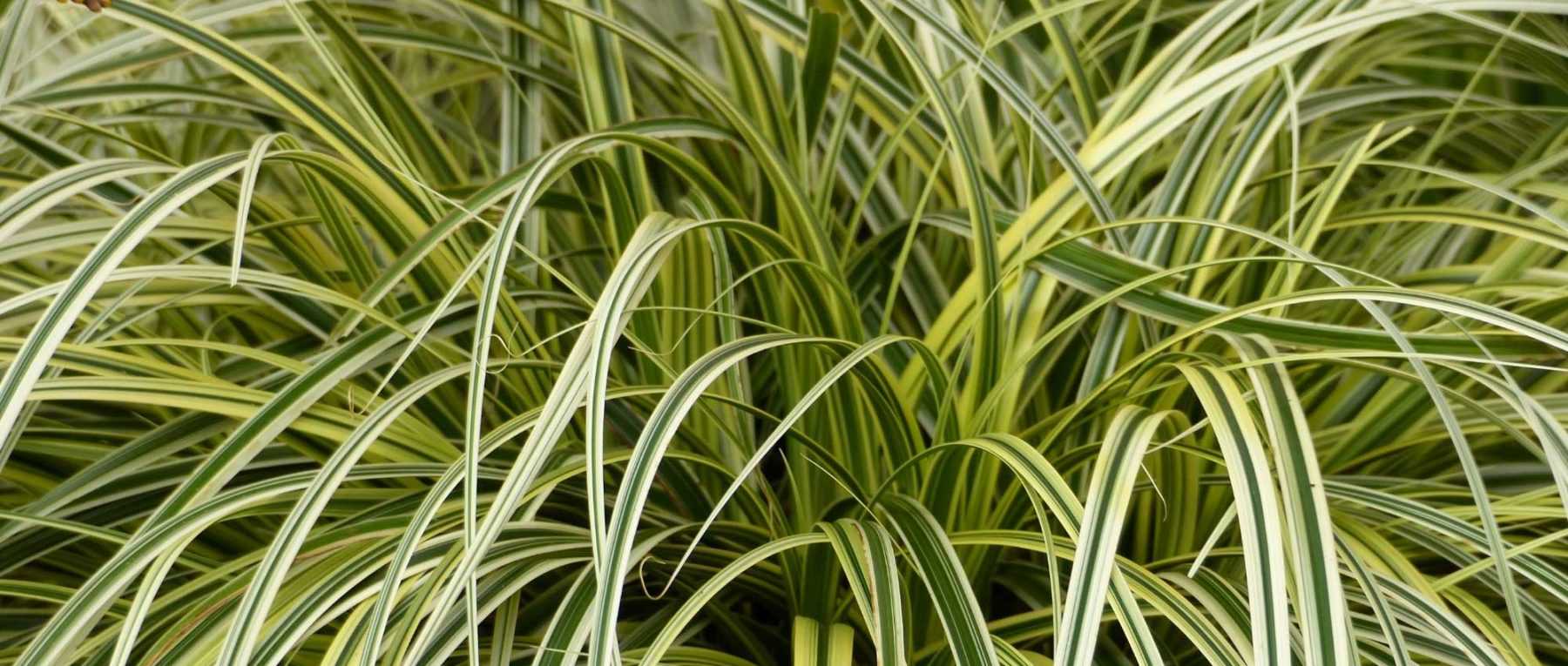
Carex: Planting, Dividing and Caring for Your Young Plants
Contents
A Few Words About Carex
- Sedges offer evergreen, fine foliage that is essential in winter to dress up the garden
- They come in a wide range of colours: yellow, blue, green, bronze, almost red…
- They instantly add graphic appeal and lightness to borders and containers
- Sedges are suited to shady locations and most tolerate dry conditions very well
- Requiring almost no maintenance, these are very easy-to-grow grasses, robust and nearly indestructible!
- They adapt well to planting in pots, borders, and some grow very well on pond edges
Our Expert's Word
Carex are hardy perennial grasses prized for their fine, colourful foliage. Depending on the variety, the hues vary greatly: carex can be green, coppery bronze, glaucous blue, yellow… and even variegated! The flowering of carex, in spikes, is however rather discreet. We particularly admire the fine, orange foliage of Carex testacea, the often bright and variegated leaves of Carex oshimensis, the small clumps of fine leaves of Carex comans, or the Carex pendula which forms tall, arching clumps… Among the thousands of species and varieties, you’ll have no trouble finding ones you love!
Carex require almost no maintenance! They are very easy and robust plants, not prone to diseases or pests. They thrive in sun or partial shade. Carex have the particularity of being suited to rather moist soils, at least cool ones. They grow well in ordinary soils that don’t dry out too much in summer. They are propagated by dividing clumps in spring. Carex are generally quite hardy, but some species, particularly those from New Zealand, may struggle when temperatures drop below -7°C.
Carex integrate well into perennial borders, but can also be used as ground cover, edging, in pots or planters, and are also perfect for pond margins.
Botany
Botanical data
- Latin name Carex sp.
- Family Cyperaceae
- Common name Sedge
- Flowering summer, usually between June and September
- Height generally between 20 and 60 cm, but sometimes over a metre!
- Exposure sun or partial shade
- Soil type ordinary, moist, not drying out in summer
- Hardiness often around -20°C, but only -7°C for New Zealand sedges.
The sedge, also known as laîche in French, is a herbaceous perennial resembling an ornamental grass. It’s prized for its decorative foliage, which can take on various hues. Sedges form a vast group, encompassing over 2,000 species! They have a wide distribution range, with most originating from temperate or cold regions (sometimes Arctic zones). They’re typically found in wet habitats, waterlogged areas: marshes, riverbanks, ponds, damp woodlands, heathlands… In France alone, there are about 120 native species, some of which can be grown in gardens: Carex elata, Carex pendula, Carex flacca, Carex atrata… As they mainly come from cold or temperate climates, most sedges have excellent hardiness. However, some species from New Zealand are far less hardy than others.
Botanically speaking, sedges aren’t true grasses but Cyperaceae, belonging to the same family as Papyrus (Cyperus papyrus)! This is a very large family comprising over 5,500 species, mostly sedges, but also including Scirpus and Eriophorum. Cyperaceae are monocotyledonous plants, quite similar to rushes, often with triangular stems. They resemble tall herbs like grasses. Many plants in this family thrive in moist soils: papyrus, cotton grasses, Scirpus…
The name ‘Carex’ comes from Greek kairô, meaning I cut, referring to the sharp edges of its leaf blades with tiny teeth. In French, sedges are often called “laîche”, possibly derived from Latin lisca meaning reeds. In English, they’re called Sedge.
Most sedges are clump-forming plants, growing in tufts that gradually widen, like Carex pendula or testacea. This makes them quite easy to propagate by division! Other sedges have rootstocks, sometimes quite short, making the plant suckering. They spread laterally but rarely become invasive. Sedge roots particularly tolerate wet, even waterlogged soils.
Sedges form fairly rounded, dense clumps composed of numerous linear leaves. The fine leaves give sedges a light, airy appearance. Generally, sedges are small plants, not very tall. Most grow between 20 and 60 cm high. However, Carex firma barely exceeds 10 cm, while Carex pendula can reach 1.50 m! Garden uses therefore vary: small sedges suit borders or pots, even rockeries for Carex firma… while taller ones work better in beds or as specimens like Carex pendula!
Sedges often have a lovely rounded, bushy shape. Others are more upright; some are trailing or arching, like Carex pendula.
Sedge leaves have the advantage of being evergreen or semi-evergreen, usually remaining in place through winter, though some deciduous species exist, like Carex elata ‘Aurea’.
Sedges offer exceptional diversity in foliage colours! The colour range is broader than most ornamental grasses. Leaves can display beautiful reflections and hues. Sometimes leaves are very light, yellow-green, almost golden, like Carex elata ‘Aurea’. Others are bronze, almost reddish, like Carex comans ‘Bronze Form’, Carex flagellifera or Carex buchananii. Some are blue-glaucous (Carex flacca). The garden effect varies completely! Bronze sedges bring warmth, yellow or golden varieties brighten shady spots, while blue-leaved types create a harmonious, restful atmosphere. Carex testacea ‘Prairie Fire’ has stunning fiery, coppery tones!
Some sedges have variegated leaves! Examples include Carex oshimensis ‘Everest’ or ‘Evergold’. These look more distinctive than other varieties, bringing great luminosity to gardens!
Some sedges offer changing colours, like Carex testacea, whose foliage shifts from bright green to coppery orange depending on sun and season.
Leaves are often long and slender, linear or thread-like, closely resembling grass blades! It’s precisely this fine foliage that gives them their light, graphic appearance! The leaves evoke hair swaying in wind, adding movement to gardens! Sometimes they’re curled at tips. Leaves can also be quite broad, like Carex plantaginea, resembling plantain leaves. Carex ciliatomarginata ‘Shima Nishiki’ has bamboo-like foliage!
Like grasses, sedge leaves have parallel veins. The midrib is strongly marked. Leaf edges have tiny teeth, making them slightly sharp. Leaf bases are sheathing, enclosing stems.
Long sedge leaves often trail beautifully, like variety ‘Feather Falls’. They can give clumps a very wide, spreading appearance. In pots or hanging baskets, trailing sedges create striking effects!
Sedge stems aren’t round like grasses but triangular in section – a key characteristic of Cyperaceae!
Sedge flowering typically occurs in summer, between June and September. Some species flower in late spring.
Sedges are mainly grown for foliage: their spike-like flowers somewhat resemble grasses but are far more discreet, less spectacular. Spikes are quite decorative on Carex pendula – long and pendulous, somewhat like hazel catkins.
Flowers are tiny, lacking petals or sepals. They cluster in slender, elongated spikes grouped at stem tips. Each stem bears several spikes, usually with lower ones entirely female (flowers have pistils) and upper spikes male (flowers bear stamens releasing pollen). Most sedges are monoecious, with male and female flowers on one plant. Spikes appear at ends of upright, unbranched flowering stems.


Sedges bear flowering spikes with male and female spikes. Carex elata (photo Hans Hillewaert), Carex atrata, Carex halleriana (photo Luis Nunes Alberto) and Carex pendula (photo Franz Xaver)
After flowering, sedges produce achenes, often trigonous, which can be brown, green or even yellow. Sometimes they have very pointed, elongated beaks. It’s advisable, especially for Carex pendula, to cut spikes before fruiting to prevent self-seeding. Infructescences can be quite decorative and unusual, like Carex grayi!
Read also
Cutting back ornamental grassesThe main varieties of Carex
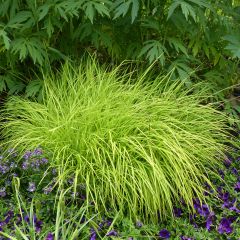
Carex elata Aurea
- Flowering time June to August
- Height at maturity 70 cm
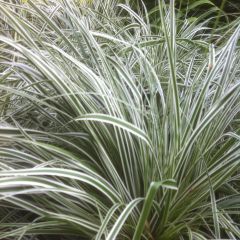
Carex oshimensis Everest - Oshima sedge
- Flowering time October, November
- Height at maturity 25 cm
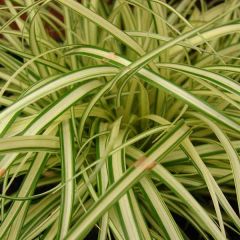
Carex oshimensis Evergold - Oshima Sedge
- Flowering time June, July
- Height at maturity 30 cm
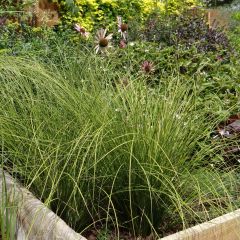
Carex testacea Lime Shine
- Flowering time August to October
- Height at maturity 50 cm

Carex comans Bronze Form
- Flowering time July, August
- Height at maturity 40 cm
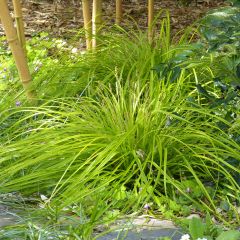
Carex oshimensis Everillo - Oshima Sedge
- Flowering time October, November
- Height at maturity 30 cm

Carex pendula
- Flowering time July, August
- Height at maturity 1,20 m
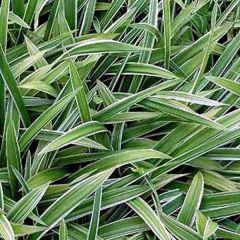
Carex siderosticta Variegata
- Flowering time May, June
- Height at maturity 40 cm

Carex morrowii Ice Dance
- Flowering time July, August
- Height at maturity 30 cm
Discover other Carex
View all →Available in 1 sizes
Available in 3 sizes
Available in 1 sizes
Available in 1 sizes
Available in 1 sizes
Available in 2 sizes
Available in 3 sizes
Available in 2 sizes
Available in 1 sizes
Available in 3 sizes
Planting Carex
Where to plant sedges?
Sedges thrive in sunny or partially shaded positions. The Carex oshimensis varieties are particularly well-suited to dry shade conditions. Generally speaking, avoid scorching sun but also excessively dense shade.
Ideally, plant them in ground that remains cool (not too dry in summer, not too wet in winter). Some species like Carex pendula and Carex riparia require moist soils and will thrive along pond edges. Sedges can actually help stabilise banks and have phytoremediation properties.
Sedges adapt quite well to container planting in pots or planters. They form robust little clumps that add volume and lightness to compositions alongside flowering plants.
You can use sedges to create ground cover by planting them en masse. Consider varieties like Carex siderosticha ‘Variegata’ for this purpose.
If you live in a cold region and are growing less hardy sedges, a good solution is to plant them in containers that can be moved under shelter for winter.
Some sedges, like Carex firma and C. conica, also work well in rock gardens.
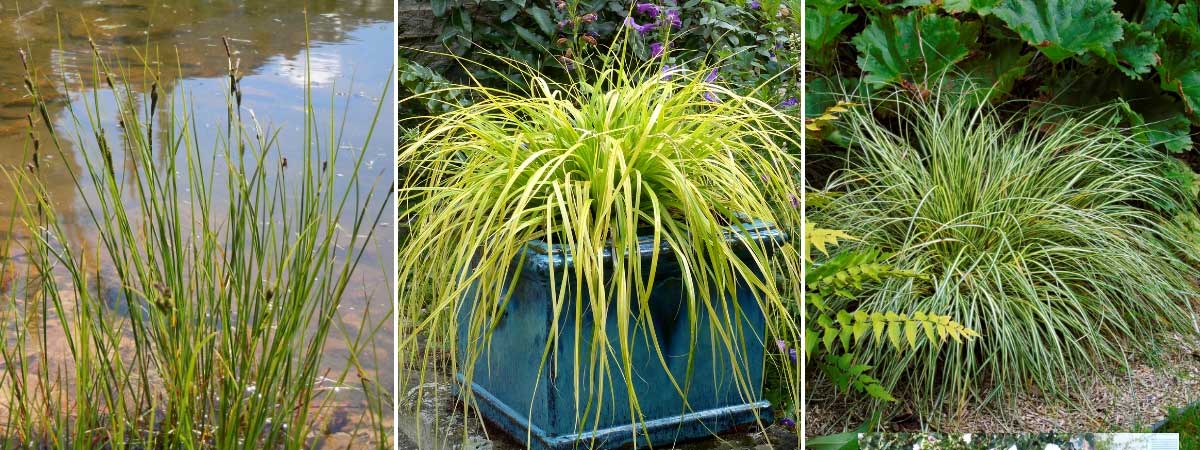

Sedges can be planted along water edges (Carex aquatilis – photo Matt Lavin), in containers (Carex oshimensis ‘Everillo’), or directly in garden beds (Carex morrowii ‘Variegata’).
When to plant?
You can plant sedges in autumn (September-October) or spring (April-May). Wait until spring for more tender species, particularly those native to New Zealand (Carex comans, C. testacea, C. buchananii)
How to plant?
Planting distances vary considerably depending on the species (between 30 and 50 cm, according to the plant’s size). You can plant sedges in large groups to create ground-covering effects.
- Soak the rootball in a basin of water.
- Dig a planting hole about twice the size of the rootball. If your soil is very free-draining and dries out in summer, you can add organic matter to improve moisture retention.
- Remove the plant from its pot and position it in the planting hole, with the top of the rootball level with the soil surface. Backfill with soil.
- Water thoroughly.
Continue watering in the months following planting. Be particularly vigilant during the first year, especially in summer, to prevent the sedge from suffering drought stress.
Maintenance and pruning
Carex are easy-care plants that require virtually no maintenance: they generally don’t need watering, fertilising, or pruning. Moreover, most varieties are fully hardy.
However, during summer droughts, occasional watering may be prudent to maintain relatively cool soil. Be more vigilant if growing them in pots or containers, as the substrate dries out faster. In open ground, don’t hesitate to apply mulch to preserve soil moisture.
You can cut back spent spikes. It’s preferable to prune those of Carex pendula before fruiting to prevent self-seeding.
With ornamental grasses, it’s sometimes recommended to cut back clumps to ground level in winter. This isn’t the case with carex! Leave young plants untouched without interference. You may gently comb through clumps in winter to remove dead leaves.
Be cautious with species native to New Zealand (Carex comans, C. testacea, C. buchananii), which are less hardy than others. If grown in pots, consider bringing them under shelter. Otherwise, apply a thick mulch layer around the stump for protection.
We suggest dividing clumps after a few years to rejuvenate them and give them more space.
As robust, low-maintenance plants, carex are rarely affected by diseases or pests! They may occasionally suffer from aphid attacks.
→ Learn more in our advice sheet: Diseases and Parasites of Ornamental Grasses.
How to propagate carex?
As with grasses, the best technique for propagating Carex is division, which is quicker and easier than sowing. They sometimes tend to self-seed spontaneously… You can then lift the young tillers that develop and plant them in another location, but they may not be identical to the original variety.
Dividing clumps
It is quite easy to divide sedges when they have been growing for 4-5 years! This helps rejuvenate the clumps while giving them more space. You can do this in spring, from April-May, and until July.
- Choose a clump that has been established for several years.
- Dig it up carefully. Remove any excess soil if needed to expose the stump and roots.
- Divide it into three or four sections using a knife or spade.
- Replant immediately the clumps, either in pots or directly in the ground.
- Water generously.
Keep an eye on your young plants and water them regularly in the first few months to give them time to develop their roots properly. If you planted them in pots, you can transplant them into the ground the following spring.
Pairing Carex in the Garden
Make the most of the foliage of sedges to play with colours! You can achieve a stunning effect by pairing, for example, bronze-coppery leaved sedges with orange flowers (wallflowers, Eschscholzia, crocosmias, daylilies…)… Or by planting green-yellow tinted sedges alongside zesty blooms. It’s easy to create successful colour combinations by relying on plants like Hakonechloa macra, knotweeds or Ophiopogon planiscapus ‘Nigrescens’. Also take advantage of heucheras, whose foliage comes in a beautiful range of colours! They’ll allow you to create a stunning scene in dry shade conditions.
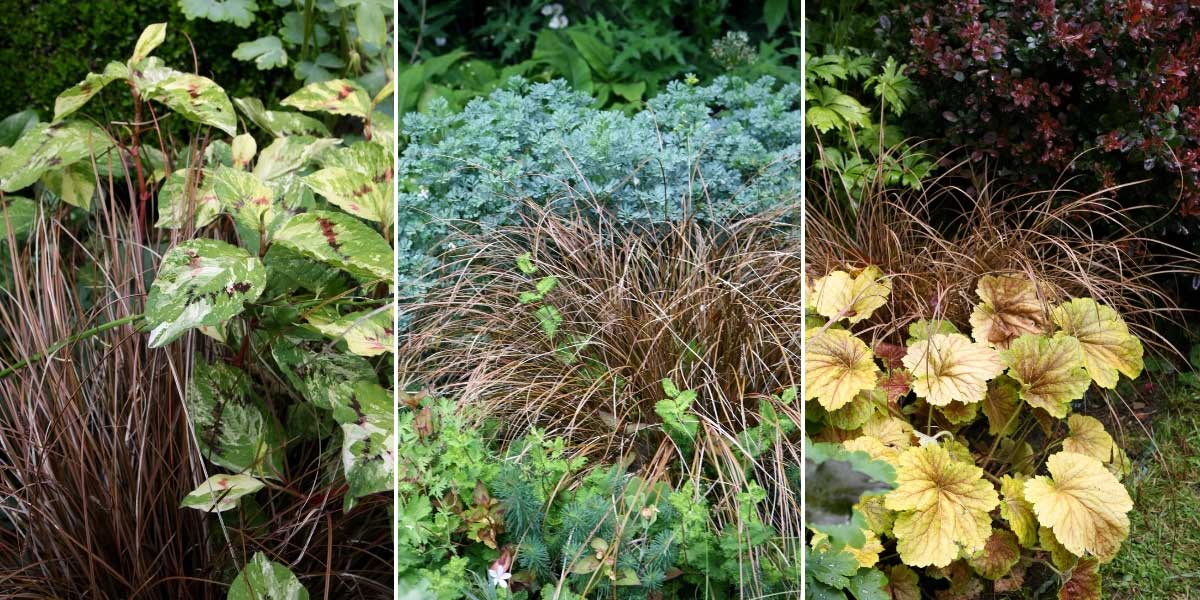

Carex buchananii pairs well with other decorative foliage, creating a scene with soft, warm tones. Carex buchananii and Persicaria virginiana ‘Painters Palette’ / Carex buchananii, Euphorbia ‘Fens Ruby’ and Ruta graveolens ‘Jackmans Blue’ / Carex buchananii, Heuchera and Berberis thunbergii. (Photos: Virginie Douce)
With their very fine, elongated foliage, sedges are perfect for creating a highly graphic scene. They bring lightness and volume to the garden! Plant them with other decorative foliage: that of ferns, ornamental grasses, Japanese maples, hostas and ophiopogons… These combinations are ideal for an urban garden, for example in a courtyard, patio or on a terrace. Add some flowering plants like Gaura lindheimeri, Verbena bonariensis or Alliums.
Sedges are an excellent solution for lightening a somewhat flat border, composed of low and broad foliage. You can plant them among bergenias, hostas and heucheras. You’ll achieve a beautiful contrast of shapes!
For a very natural style garden, for example in a bright woodland setting, we recommend planting sedges with woodrushes, hostas, brunneras… Also take advantage of the graphic foliage of ferns like Cyrtomium fortunei, Polypodium vulgare, or Dryopteris… Add some Solomon’s Seals and Tiarella, their delicate white blooms will illuminate the garden! You can also add splashes of colour with the elegant flowering of foxgloves!
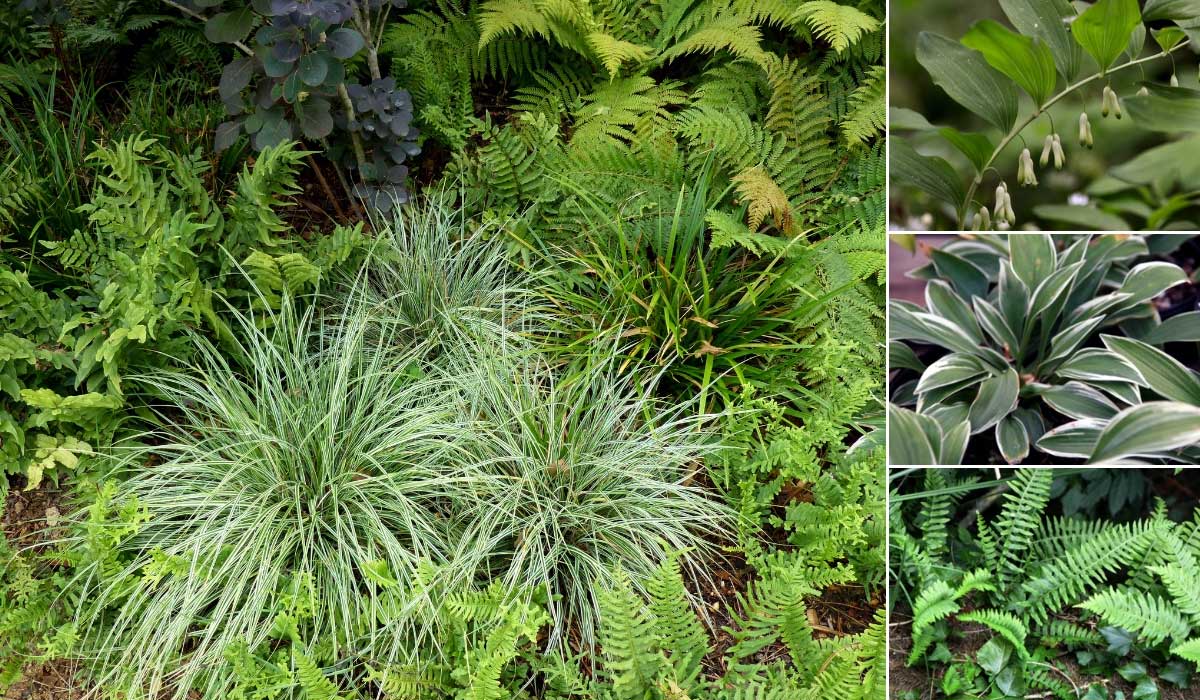

Sedges pair perfectly with fern foliage, creating a very natural scene! Carex ‘Everest’, Polypodium vulgare ‘Bifido-Multifidum’ and Cyrtomium fortunei / Polygonatum multiflorum (photo Radio Tonreg) / Hosta ‘Allan P. McConnell’ (photo David J. Stang) / Polypodium vulgare (photo Lamiot)
Because they like fresh, even moist soil, sedges can be planted at the edge of a pond. We recommend species like Carex acuta or Carex riparia, which are particularly well-suited and will also help stabilise the banks. They’ll thrive alongside rushes, Iris pseudacorus, Asian primroses, Menyanthes trifoliata, reeds and papyrus (choose Cyperus alternifolius for its hardiness)… You’ll create a superb, quite wild and natural scene, ideal for relaxation!
As they form small, sometimes quite compact clumps, sedges can be planted in pots with Muehlenbeckia, heucheras, and some flowers like bellflowers, bidens or lobelia… You can then place them on a windowsill, balcony or terrace!
Some varieties of sedge have the advantage of bringing an exotic aspect to the garden! Those with bronze or coppery foliage can be integrated into an Australasian plant border, with phormiums, agapanthus, cordylines… Add some agaves, kniphofias and crocosmias. The Carex ciliatomarginata ‘Shima Nishiki’, whose foliage resembles that of bamboos, can find its place in an Asian-style garden, alongside true bamboos, ferns (for example Athyrium niponicum), Acer palmatum, Hakonechloa macra and azaleas.
→ Discover 5 beautiful pairing ideas with Sedges in Jean-Christophe’s advice sheet!
Did you know?
- Versatile uses!
Thanks to their long leaves, both slender and sturdy, sedges are used in Japan to make farmers’ hats. They can also be used for chair seat weaving, as well as basketry. As they are well adapted to wet mediums, sedges are also useful for bank stabilisation and phytoremediation. They can be employed in ecological landscape restoration projects and natural mediums.
Useful resources
- Discover our wide range of Carex!
- Our advice sheets:
- How to propagate Carex? We give you all our tips.
- An article by Michael on our blog – Carex testacea Lime Shine: a very bright sedge, to discover!
- Our video tips – Dividing an ornamental grass
- Our advice sheet – Ornamental Grasses: Which variety to choose?
- An article by Michael – Ornamental Grasses: those to prune, those to comb
- To know everything and make the right choice, check out our dedicated Carex buying guide
- Learn more about ornamental grasses for north-facing gardens
Frequently asked questions
-
Should I prune the carex at the end of winter?
No, unlike deciduous grasses, which are best cut back to ground level in winter, carex should be left as they are! You can simply comb through the clumps to remove dead leaves.
- Subscribe!
- Contents
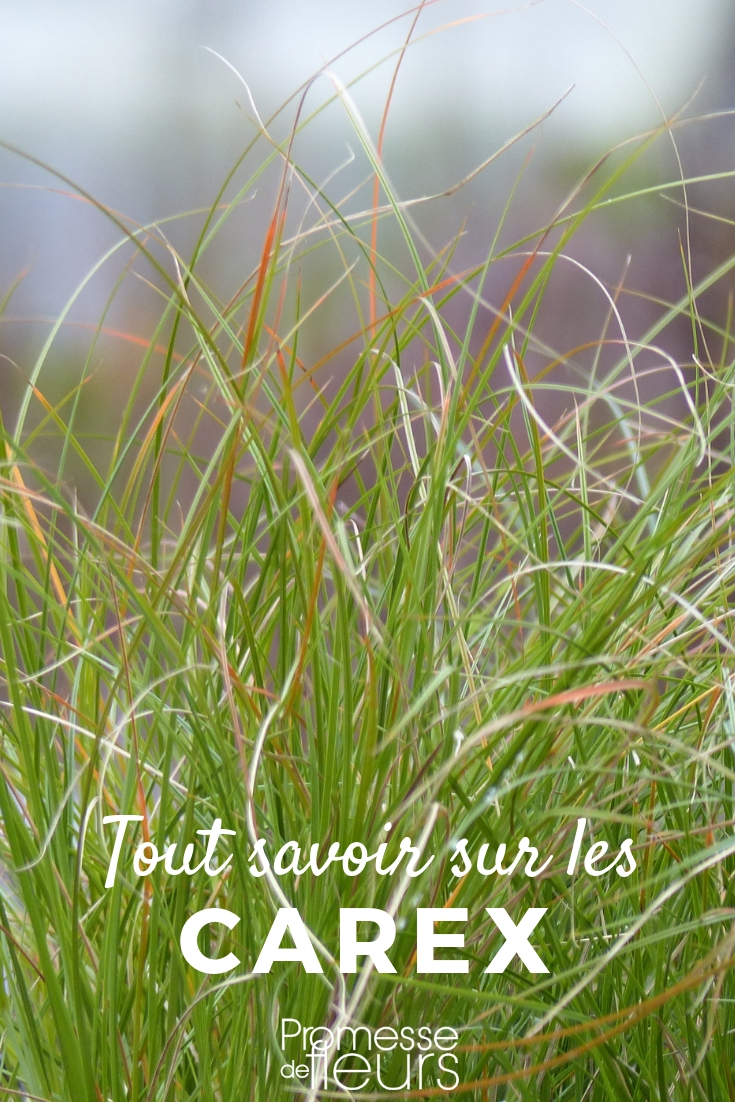


































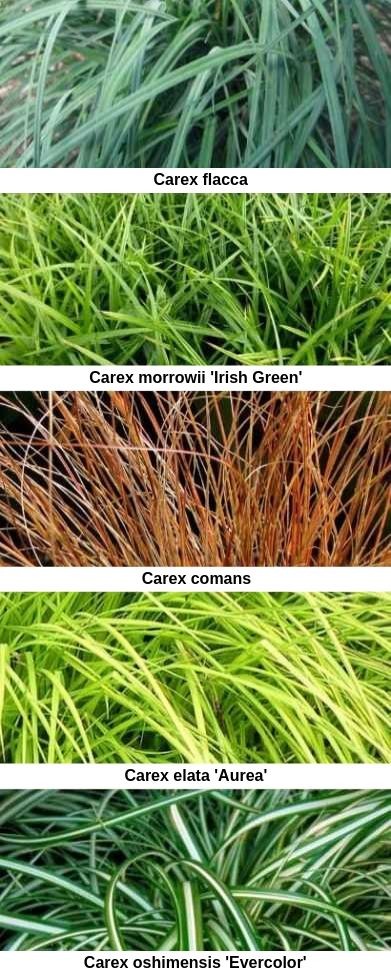
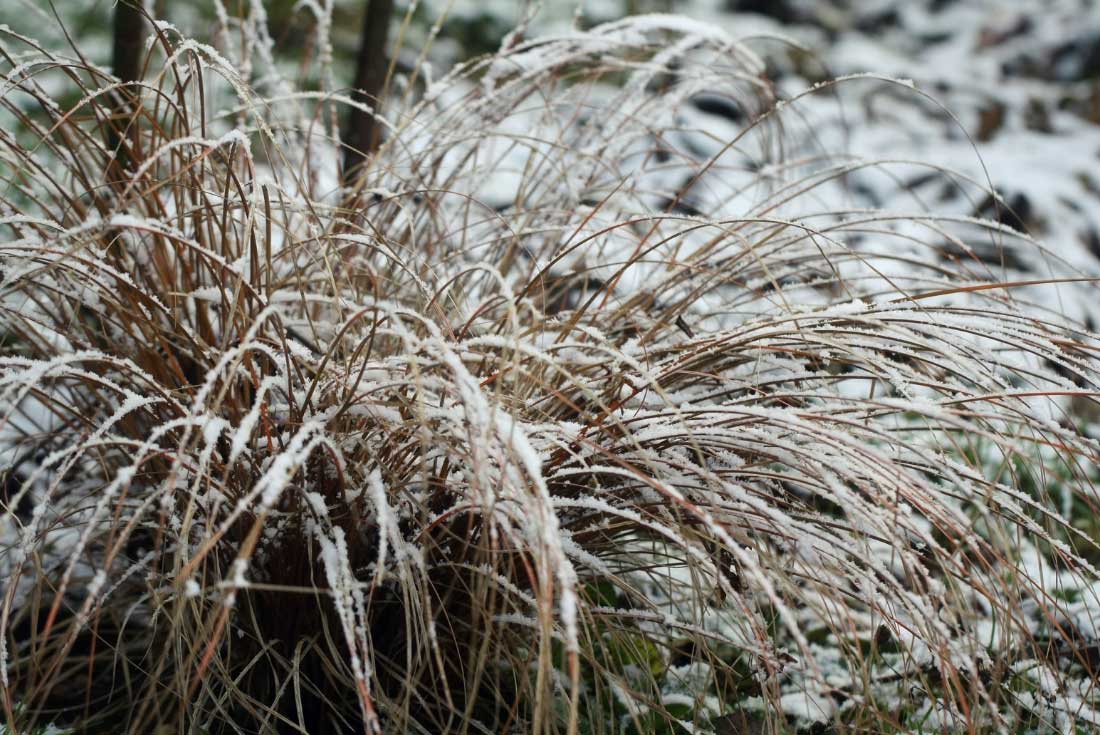
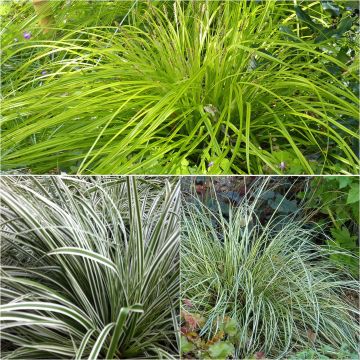

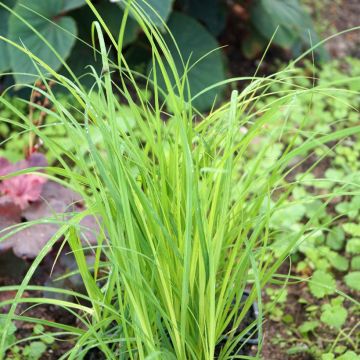
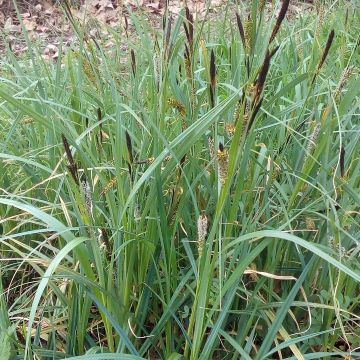

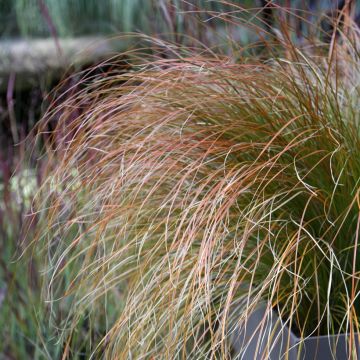

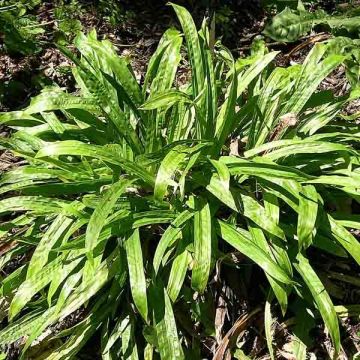

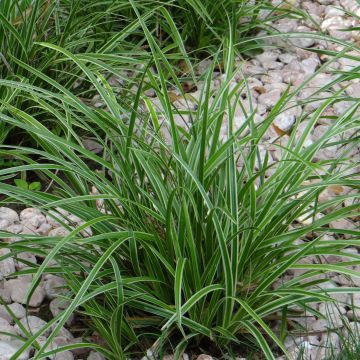
Comments